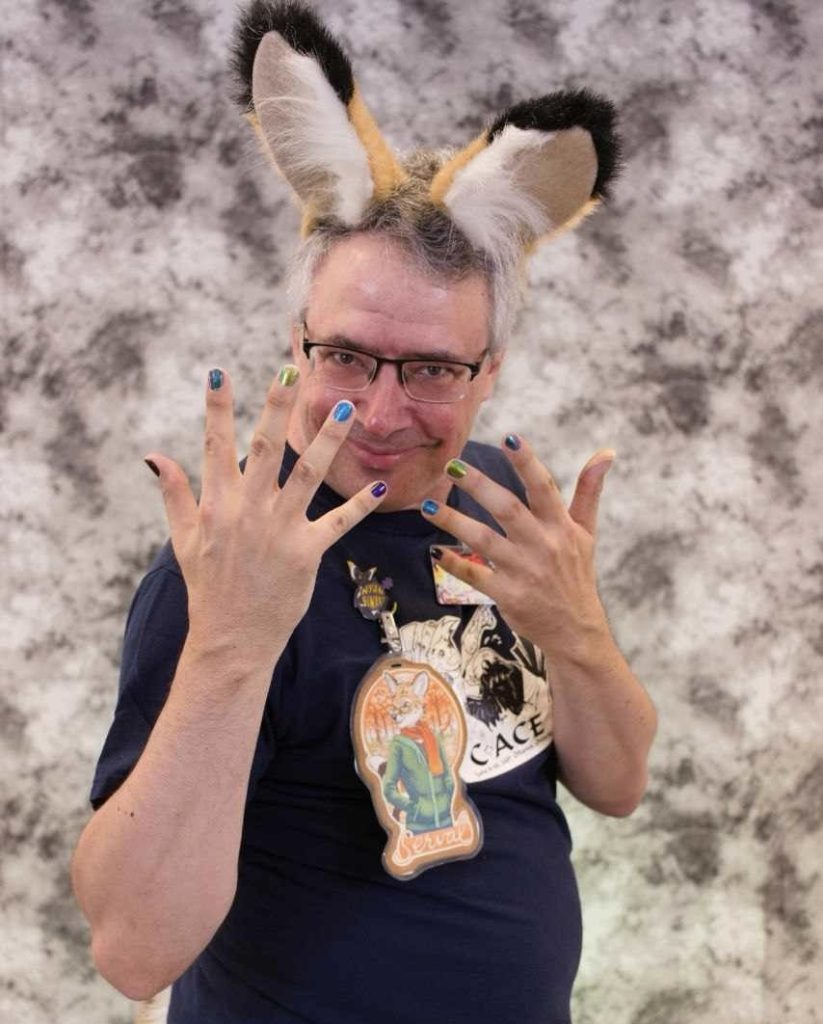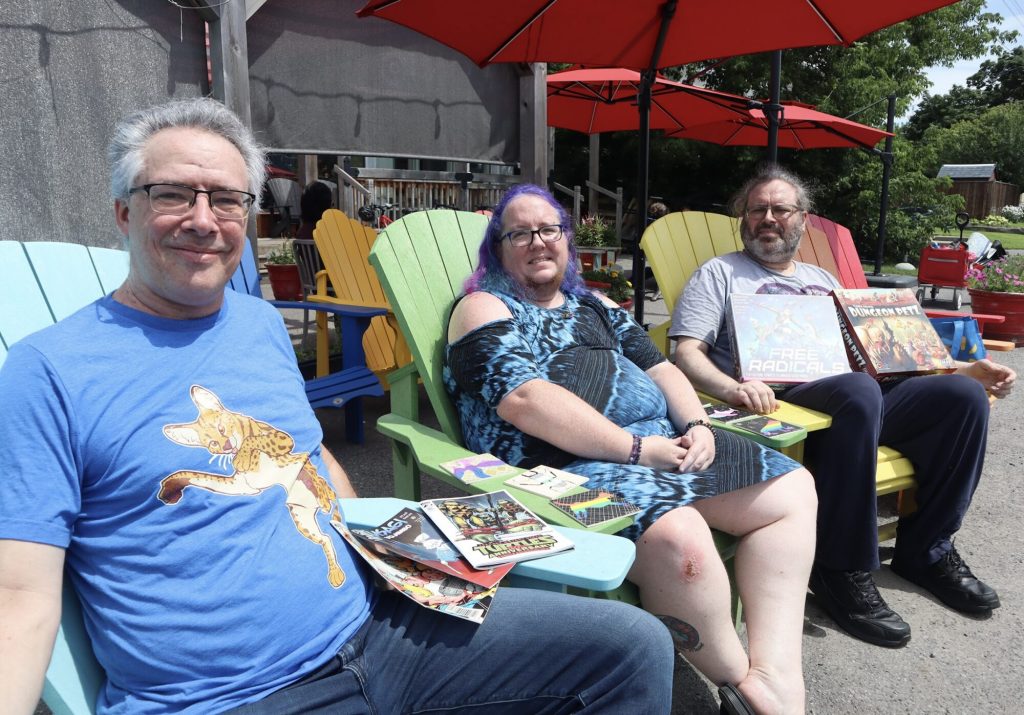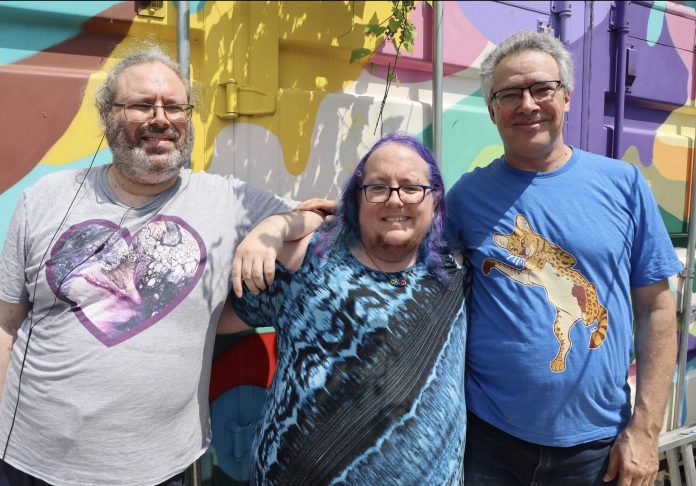Britannia resident Ocean O’Fhloinn realized they might not be monogamous after catching feelings for someone else while in a committed relationship.
“I brought up these feelings with my girlfriend at the time, and it did not go well,” O’Fhloinn recalled to KT during an afternoon interview at Beachconers Microcreamery. “We tried to make it work, but it didn’t. We were young and she was very monogamous.
“I started to realize that I could have feelings for more than one person and that it does not mean my feelings for either one of them are any less.”
O’Fhloinn is part of the polyamory community, where people have romantic relationships with more than one partner at the same time. The name “polus” stands for “many” in Ancient Greek and “amor” is Latin for “love”.
Polyamory is different from polygamy, which involves a person, typically a male, with more than one spouse, often with strong ties to religion.
The Montreal native who moved to Ottawa when they were six has two partners: Dae Gordon and Niall MacConiall. Gordon is currently seeing two others while MacConiall is in the early stages of dating someone new.
Gordon first met O’Fhloinn in 2010 after one of his former partners introduced the pair.
“Ocean and I hit it off pretty fast,” said Gordon. “At the time, I was doing a lot of set- up work with different furry conventions, and I brought Ocean with me. That is where they met Niall in 2012.”
The furry fandom
A “furry” is someone who has an interest in anthropomorphic animals, or animals with human qualities. It’s formed into a community where people socialize, purchase art, dance, and explore their identities. Members create a “fursona” – their own animal character – which typically are hybrids. In Ottawa, hundreds attend CanFURence, an annual furry conference held at the Delta Hotel in August.
MacConaill grew up as a shy francophone in Quebec but was able to slowly shed his anxiety after finding acceptance in the animal-loving community. He grew up reading French comics that were full of animal characters, and immediately fell in love with the tone and airbrushed artistic techniques. He was also a dancer, and enjoyed sharing worldly chocolate at the conventions he attended. Soon, he attracted many friends.

“That specific convention I had a special, unique chocolate from Brazil that I’d never had before. Most people went ‘eww’ when they tried it, but Ocean immediately had the same reaction I did,” remembered MacConaill. “On Sunday night, I started dancing and I realized Ocean was there dancing with me.
“When it came time to say goodbye, we hugged, and there was this spark that I had never had before. I mumbled something, and on the way back I got an email from Ocean saying they wanted to meet. Now it’s been 10 years.”
While this has been MacConaill’s first poly relationship, Gordon has been dating multiple people at once since realizing love can be shared.
“It’s not the society norm, but it seems normal to me,” he said. “I had to find what the right ethical angle was for me. There was a lot of experimentation.”
Gordon compared it to someone falling in love again after their partner died or a relationship ended. MacConaill said it’s just like how you can have multiple friends to help fulfill various needs.
Statistics Canada does not track how many people are engaged in a poly relationship, but some global stats suggest that it is about one in six people. In the United States, a 2021 survey found that four to five per cent of its population has engaged in consensual relations with more than one partner.
Misconceptions and jealousy
So how does a poly relationship work? O’Fhloinn said it all comes down to constant communication.
“Feelings of jealousy usually point to an underlying issue of needs not getting met somewhere,” they explained. “I remember when (Gordon) and I started going out, that was my introduction to polyamory. It was a little bit rough for me.
“There were times where he was dating someone and they would call and interrupt our date, and that would get me a little rattled. But I have since gotten over that,” O’Fhloinn explained. “You need to be willing to be wrong. We are not fighting with each other; we are trying to find a solution to a problem.”

In this case, it helps that both MacConiall and Gordon have known each other since the 90s. While the two are not in a romantic relationship together, they are good friends and feel part of a community.
While polyamorous relationships are on the rise, they are not always accepted or understood. For starters, polyamory is not cheating, contrary to some assumptions, explained Gordon. That said, it’s still possible to be disloyal.
“If you go off and sleep around and don’t talk to people, you aren’t giving your partner the opportunity to provide consent,” he said. “It’s also not swinging, because it’s not about going out and hooking up. It’s about creating a relationship with a circle of people and so that you have an intimate community.”
O’Fhloinn added they don’t need to see each partner on a daily basis and noted date nights could include working together or going grocery shopping; they don’t always need to be lavish romantic events such as a fancy dinner or trip to the movies.
It’s also not about the sex.
“I am demi-sexual, so I need a lot of emotional connection and trust built up before I even explore the possibility of an intimate relationship with somebody,” they said. “For me, it’s quality time and spending life with somebody.”
